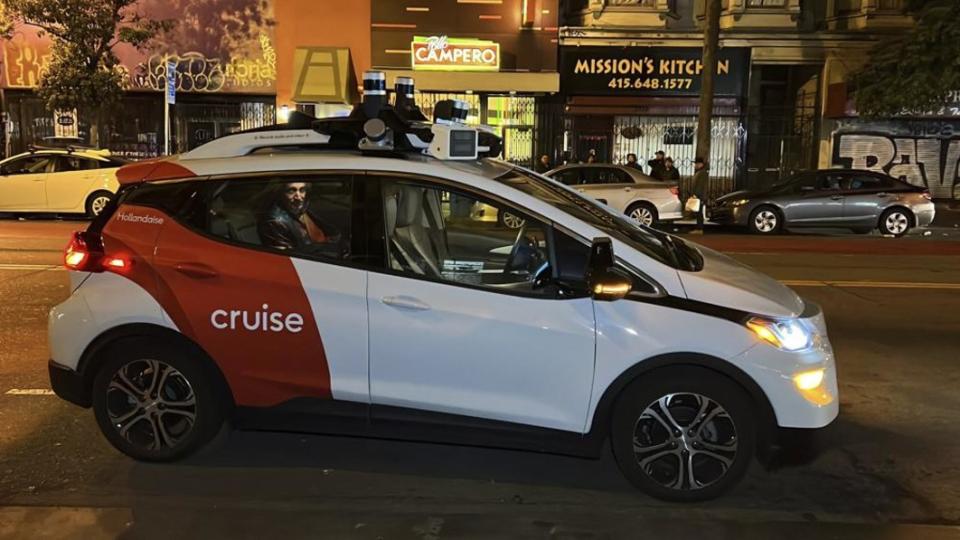GM is in park with its driverless Cruise taxis. Should it stay there?

General Motors (GM) continues to see a future in its troubled Cruise robotaxi fleet — but in what form remains unclear.
"We're still very committed, and we still see that as a big growth opportunity for us," GM CFO Paul Jacobson said on Yahoo Finance Live (video above).
The support for the beleaguered Cruise — GM's self-driving division — came after GM told investors on its fourth quarter earnings release a week ago that it's aiming to slash expenses related to the brand by a whopping $1 billion this year.
This level of expense slashing at Cruise would suggest the potential for the robotaxi fleet to go away entirely and have its tech advancements folded into GM's cars and trucks or licensed out to other transportation parties.
Jacobson added that a more complete view of Cruise's operating structure will arrive later this year for investors.
"We're still focused on the tech," Jacobson said. "We're still investing heavily in our engineering staff, and we're committed to [doing] that. We're going to reassess that strategy and think about what's the right way to roll it out and how ... we think about capital structure in the weeks and months ahead. There's more information to come later this year as we think about what the right approach to bring Cruise to the market is."
For now, Cruise remains in park after a rough 2023 of headlines and financial performance.

The accident
On Oct. 2, a Cruise vehicle ran over a woman in San Francisco. The woman was struck by a human-driven car and thrown in front of the self-driving Cruise vehicle, the L.A. Times reported. The Cruise robotaxi didn't process the incident correctly, which caused the woman severe injuries, as the car reportedly dragged her 20 feet. Then Cruise was slow to reveal the full details of the accident.
California’s Department of Motor Vehicles suspended Cruise's license to operate in the state. The agency determined that Cruise's vehicles are not safe for public operation. Cruise also misrepresented safety information about the driverless technology, the department said.
Cruise paused all its driverless operations.
The incident led to the departure of Cruise CEO Kyle Vogt, who boasted in 2022 that the brand would hit $1 billion in sales by 2025. It also led to a series of ongoing investigations and inquiries by various government agencies, according to Yahoo Finance's review of GM's new annual report.
"In addition, certain federal and state agencies, including the California DMV, the California Public Utilities Commission, NHTSA, the US Department of Justice, and the SEC, have opened investigations or made inquiries in connection with the incident," GM outlined in the report. "We and Cruise are investigating these matters internally and intend to cooperate with all government regulators and agencies in connection with these matters. At this time, we are not able to predict when Cruise will resume driverless testing or commercial AV operations."
GM acquired Cruise in 2016 for $1.1 billion. In 2021, Cruise played a starring role in GM's guidance to double revenue by 2030. Cruise was projected to increase its sales to $50 billion by the end of the decade from virtually nothing at the time.

 Yahoo Autos
Yahoo Autos 
